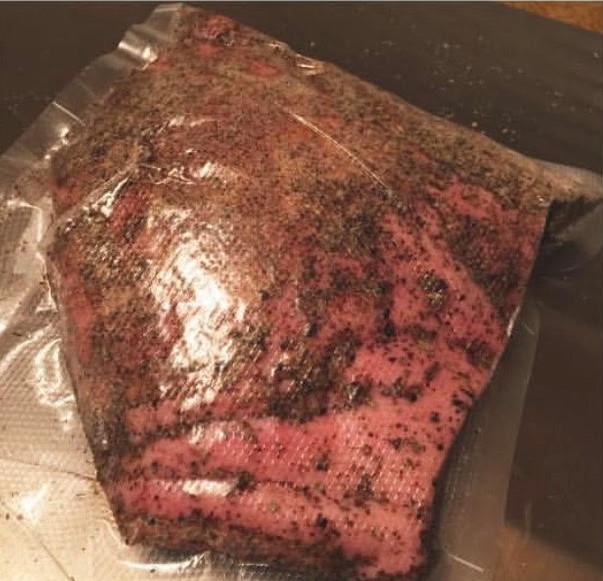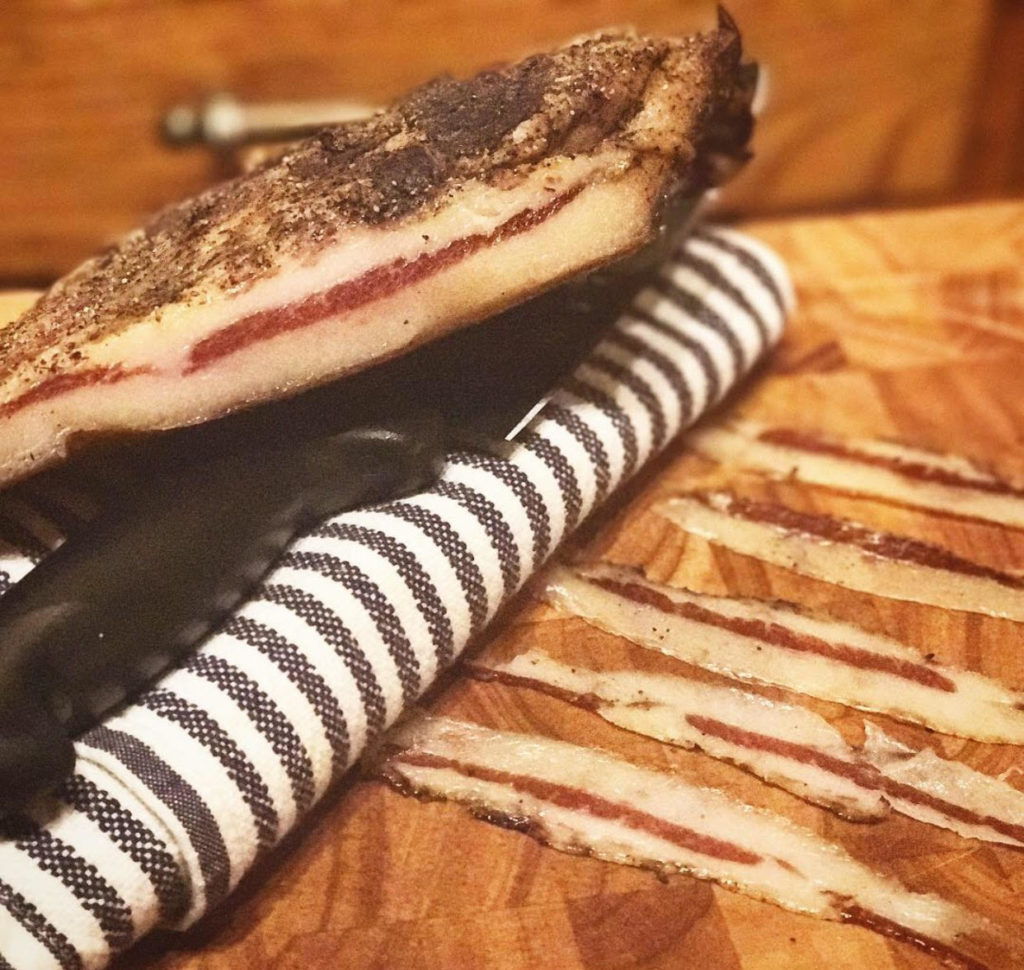Sometimes, you need to undertake a multi-month process in order to make a great dish of pasta for dinner. In this case, that process starts with a pig jowl and ends in a delicious plate of pasta all’amatriciana. Yup, I’m talking about making guanciale, or a dry cured pig jowl.
Planning Phase:
This process starts with a nice piece of pig jowl, or pig cheek. In my case, I picked up a pig jowl from a local farmer’s market. I did some research into traditional cures that would give it good flavor without being too overpowering.
Curing Phase (2 weeks+):
I weighed the meat and the spices first.
Then, I vacuum sealed them and allowed it to cure in the fridge.
It should stay in the cure for a minimum of 2 weeks, although I left mine in for 4 months because I got distracted. That’s one of the major benefits of using an equilibrium cure, the meat can stay in it for while while life happens.
Drying Phase (2 months+):
After 4 months (whoops) I took the meat out of cure, rinsed it in cold water, patted it dry, and coated it with black pepper. I used a needle and thread to sew a hole through the meat in order to hang it up in the curing chamber.
The meat was hung in the curing chamber for 2 months, until its weight loss plateaued at 20%.
Tasting Phase:
I sliced this up thin to taste it, and boy does it have some good flavor.
Without being overpowering, this cure brought out the best of the flavor of the pork jowl.
Sliced thin, this is perfect for tasting.
I cut thicker stripes to use as a base for pasta sauce.
Pasta all’amatriciana and carbonara here I come!
Disclaimer: Meat curing is a hobby that comes with inherent risks. We can all do things to limit this risk by educating ourselves about the process and the utilizing the safest known methods to create our products. This website is for educational purposes only, and all experimentation should be done at each individuals own risk.










Thanks for sharing your research outcomes and recipes!
Rusticpeasantfood on IG
No worries! Thanks for reading 🙂
Wow !!! So beautiful. I ran into an issue like you where the cured meat plateaued. I usually dry until 25%-30% weight loss but with the extra fat, it’s hard to achieve that percentage. Is there a rule of thumb or a method to determine when it’s ok to pull? I know the goal is to lose enough moisture to make safe and lower AW. Thanks for your help.
For home curers who aren’t going to be using fancy tools like AW monitors it’s more a bit of an art. However, the way I think about it is that we are looking for around 30% weight loss from the meat, we know the fat isn’t going to lose much weight. So if you have a product that is 30% fat, then you really need to plan to lose 30% from 70% of the weight, which will be a smaller number and maybe be around 20% of the total weight.